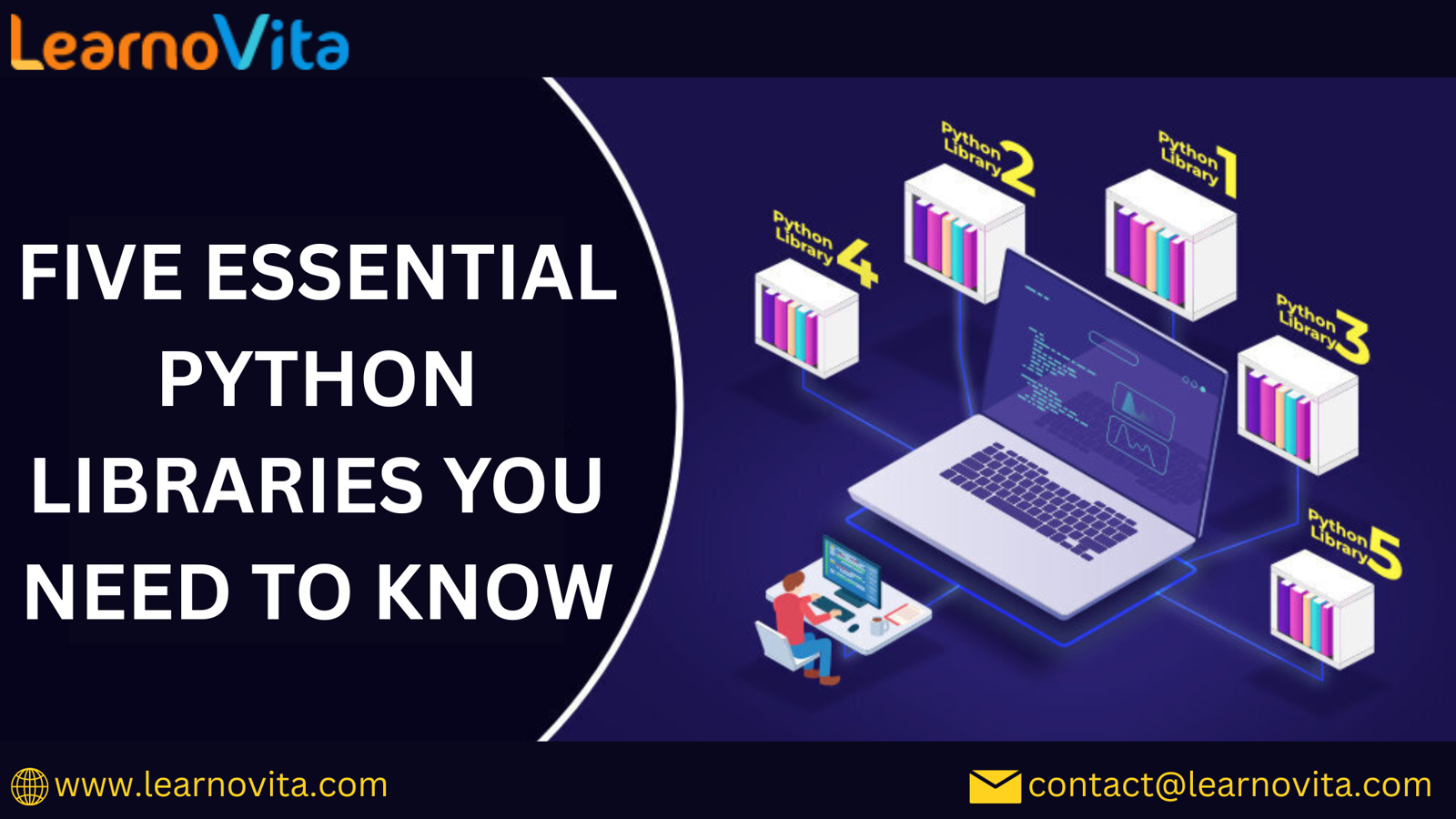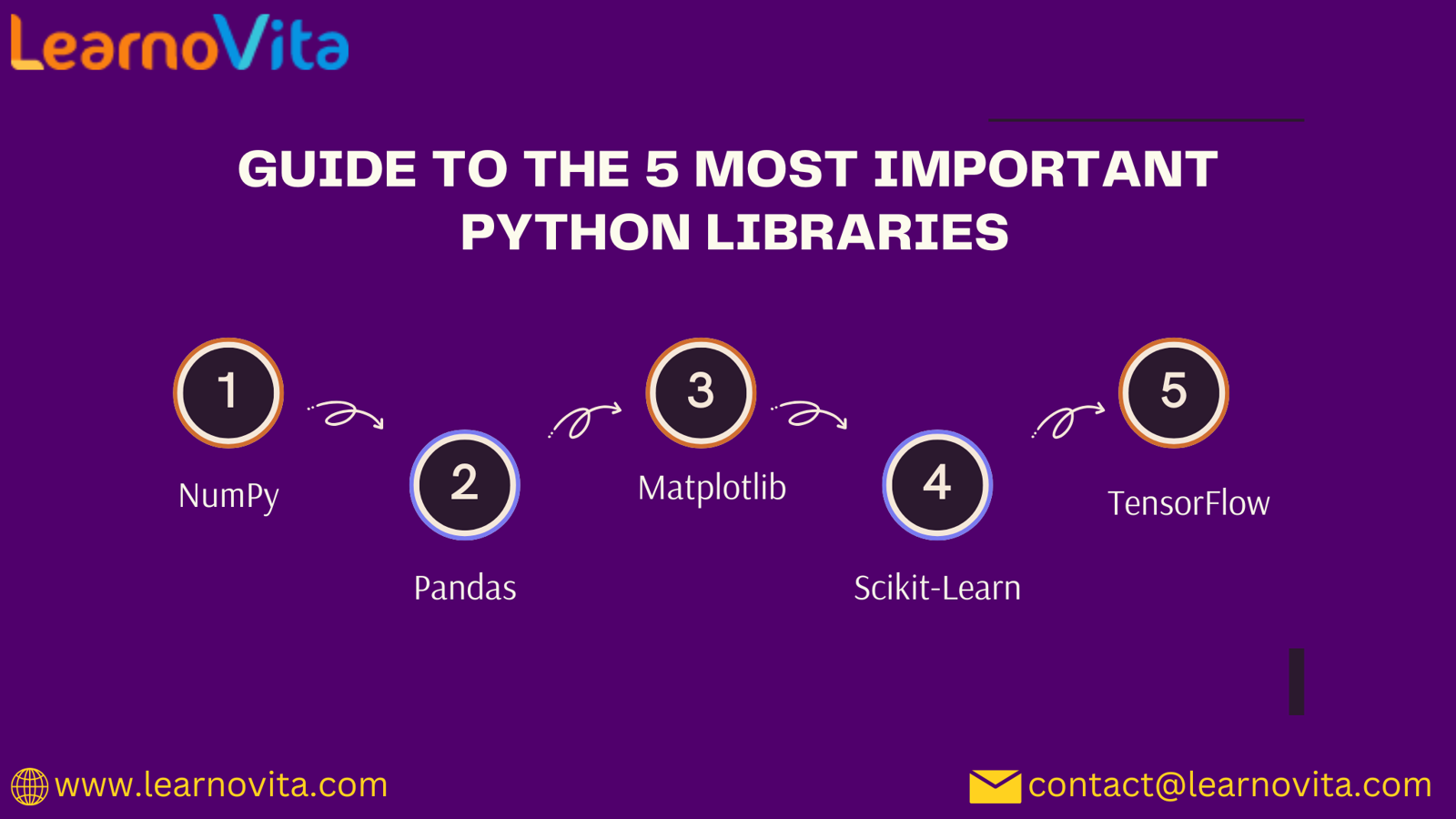5 Python Libraries Every Developer Should Master

1. NumPy
Overview
NumPy, or Numerical Python, is the foundational library for numerical computing in Python. It provides powerful tools for working with arrays and matrices, making it essential for scientific and mathematical computations.
Key Features
- N-dimensional Arrays: Enables efficient storage and manipulation of large datasets.
- Comprehensive Mathematical Functions: Offers a wide range of mathematical operations, from basic arithmetic to advance linear algebra.
- Performance Optimization: Built in C, providing speed advantages over traditional Python lists.
Use Cases
NumPy is widely used in data analysis, scientific computing, and anywhere numerical data processing is required.
2. Pandas
Overview
Pandas is a powerful data manipulation and analysis library that introduces DataFrames, making it easier to work with structured data.
Key Features
- DataFrames and Series: Simplifies data representation, allowing for easy manipulation and analysis.
- Data Cleaning Tools: Provides robust functionality for data cleaning, filtering, and aggregation.
- Time Series Support: Built-in capabilities for handling time series data.
Use Cases
Pandas is essential for data scientists, analysts, and anyone working with data, enabling efficient data manipulation and analysis.
3. Matplotlib
Overview
Matplotlib is a versatile plotting library that allows developers to create a wide range of static, animated, and interactive visualizations.
Key Features
- Diverse Plot Types: Supports various visualizations, including line graphs, bar charts, and scatter plots.
- Customization Options: Offers extensive customization capabilities for creating high-quality graphics.
- Integration with Other Libraries: Works seamlessly with NumPy and Pandas for effective data visualization.

Use Cases
Matplotlib is invaluable for creating visualizations for reports, presentations, and exploratory data analysis.
4. Scikit-Learn
Overview
Scikit-Learn is a robust machine learning library that provides simple and efficient tools for data mining and analysis.
Key Features
- Variety of Algorithms: Includes algorithms for classification, regression, clustering, and dimensionality reduction.
- User-Friendly Interface: Designed to be accessible for beginners while still powerful enough for experts.
- Model Evaluation Tools: Provides tools for model validation, selection, and tuning.
Use Cases
Scikit-Learn is ideal for developing predictive models and applying machine learning techniques in various applications.
5. TensorFlow
Overview
TensorFlow is an open-source library developed by Google for deep learning and machine learning tasks. It simplifies the process of building and training neural networks.
Key Features
- Flexible Architecture: Supports both high-level and low-level APIs for different levels of customization.
- Scalability: Can run on multiple CPUs and GPUs, making it suitable for large-scale machine learning applications.
- Strong Community Support: Backed by extensive documentation and a large user community.
Use Cases
TensorFlow is widely used for applications like image and speech recognition, natural language processing, and more.

Comments
Post a Comment